The Best Houseplants for Air Purification
Houseplants purify air by absorbing CO2 and pollutants, releasing oxygen, and trapping dust, creating a healthier indoor environment through natural processes.
You don’t need a super-exotic plant for air purification, but the best ones have large leaf surface areas and root microorganisms for phytoremediation.
Snake plants and pothos varieties are good matches for beautiful greenery, or you can choose something with a little bit more texture, like a dracaena.
Whichever air-purifying plants take your fancy, watering frequency is crucial to air purification. The easyplant self-watering pot takes care of watering – refill the reservoir monthly (or when it runs dry), and your plant will have all the water it needs.
Join us below to discover the eight best houseplants for air purification.
Eight Houseplants for Indoor Air Quality
Houseplants can improve your home’s air quality while adding beauty to your spaces.
While the air-purifying effects are subtle, you’ll love the natural freshness and greenery plants bring to a room.
Larger and more numerous plants have greater effects on indoor air quality, so if you have space, it’s best to have a few plants like those in the Enlightened Oasis collection.
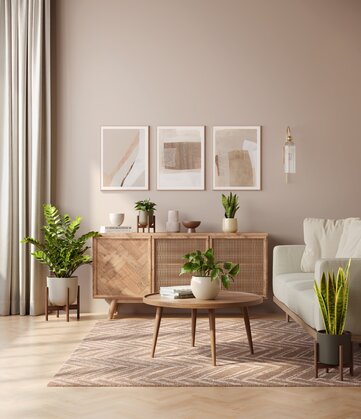
Start your search with these beauties:
1. Snake Plant (Golden or Green Varieties)
The snake plant is a low-maintenance houseplant with thick, sword-shaped leaves in a striking banded pattern.
The leaves have a large surface area for air purification and stretch outwards for light from the base, giving your snake plant a wonderful sense of movement.
Two varieties are best for your home: the golden snake plant, with green and yellow leaves, and the green snake plant, with green leaves. Both have subtle patterns on the leaves, a similar growth rate, and identical care requirements.
Snake Plants grow best in a well-lit space with medium to bright light and adapt to low-light spaces and those without natural light. Watering is done whenever the soil runs dry, but with the easyplant pot, you only need to water every two months.
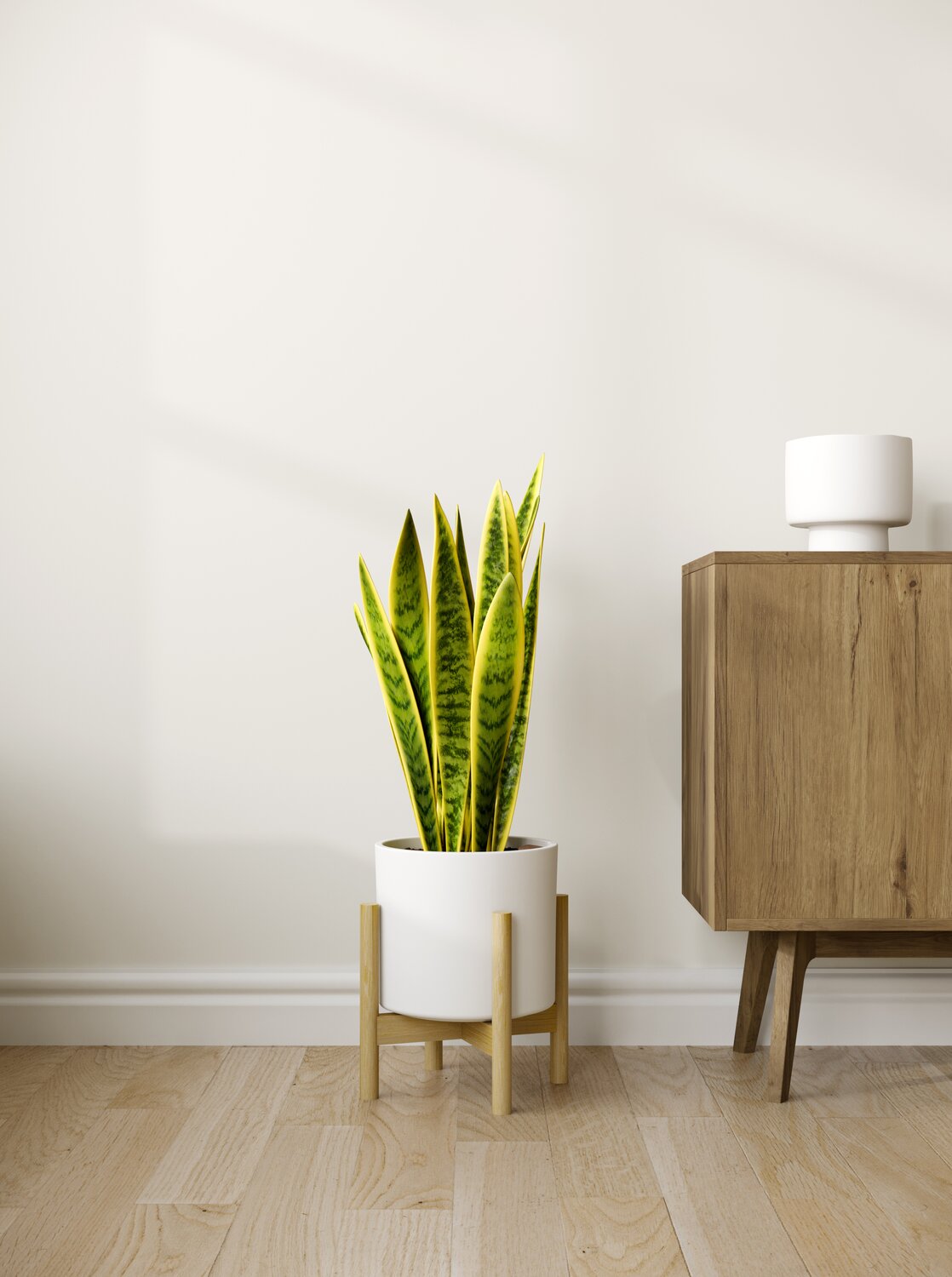
2. Rubber Tree
The rubber tree absorbs and neutralizes airborne chemicals like trichloroethylene, formaldehyde, carbon monoxide, and benzene in your home. Even better, it thrives in bright indirect light, making it perfect near a window.
You'll adore your rubber tree's dark green leaves and red fig-like growths in the center of the leaves (the rubber tree is part of the Ficus or fig family), which add a welcome touch of color.
Place your rubber tree in diffused light and refill your easyplant pot with water monthly to keep it happy and stimulate new growth.
You can expect your rubber tree to reach around 10 ft indoors, and they are very tolerant of pruning, so give it a snip to control the height and spread.
3. Monstera Deliciosa
Monstera deliciosa is a stunning tropical houseplant with large, glossy leaves and distinctive natural leaf holes called fenestrations.
Those leaves have a large surface area, giving your delicious plant its unique appearance and ability to remove volatile organic compounds from indoor air.
New leaves form quickly when the plant is happy. They unfurl from the center, starting small and solid and then developing splits and holes as they mature in a gradual transformation that will add a dynamic element to your indoor greenery.
Your monstera deliciosa will do best in bright indirect light – think in front of sheer curtains or across from a window without direct sun. Watering is monthly with the easyplant pot.
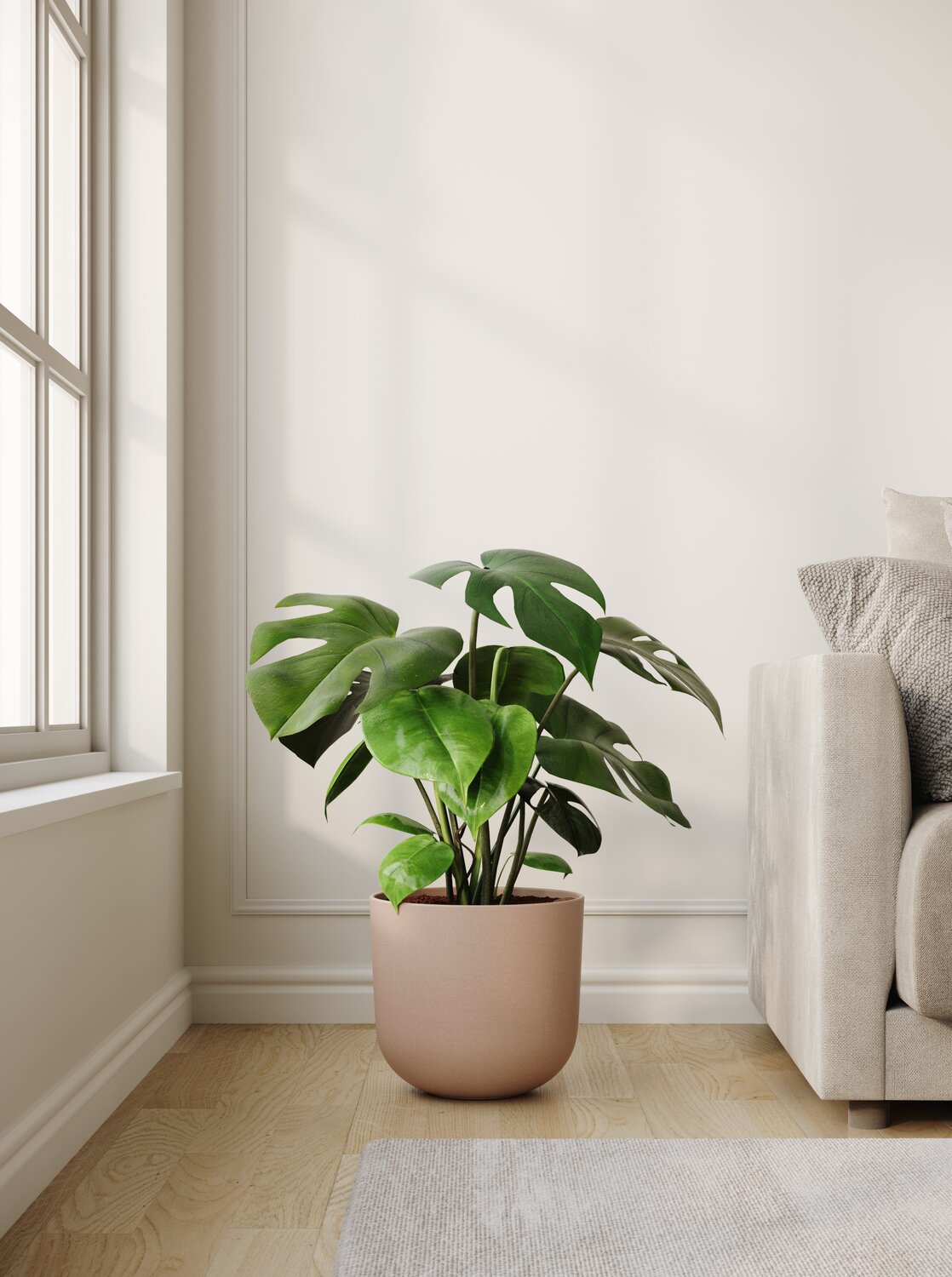
4. Dracaena (Dracaena Lemon Lime and Dracaena Kiwi)
Dracaena plants have a tropical, tree-like appearance with spiky, ruffled leaves and narrow stems that move gracefully with a breeze.
The dracaena kiwi and dracaena lemon lime are popular varieties with excellent air purification qualities for VOCs.
Kiwi varieties have thinner leaves and stems than lemon lime ones, giving them a daintier appearance. Lemon lime varieties have brighter, larger foliage.
Your dracaena will thrive in bright, indirect light and tolerate low light. Less light means a slower growth rate, but it won’t kill your dracaena. The easyplant self-watering pot reduces the watering frequency to one month.
5. Schefflera Tree
The schefflera tree brings lush, dense green foliage with oval-shaped leaves in overlapping patterns to your room corners.
That leaf density creates a large surface area for absorbing pollutants from the air, making the Schefflera a top air purification plant for your home.
It thrives in bright direct light but does well in medium to bright indirect sunlight. It won't tolerate low light spaces, so keep it in a bright room for the lushest foliage.
Your schefflera can grow up to 15 ft tall and 4 ft wide indoors, but you can prune the top and edges to control its height and spread. The lower you prune, the more branches you'll get, giving your umbrella plant a bushier appearance.
Watering requirements are usually weekly, but the easyplant self-watering pot only needs topping up once monthly.
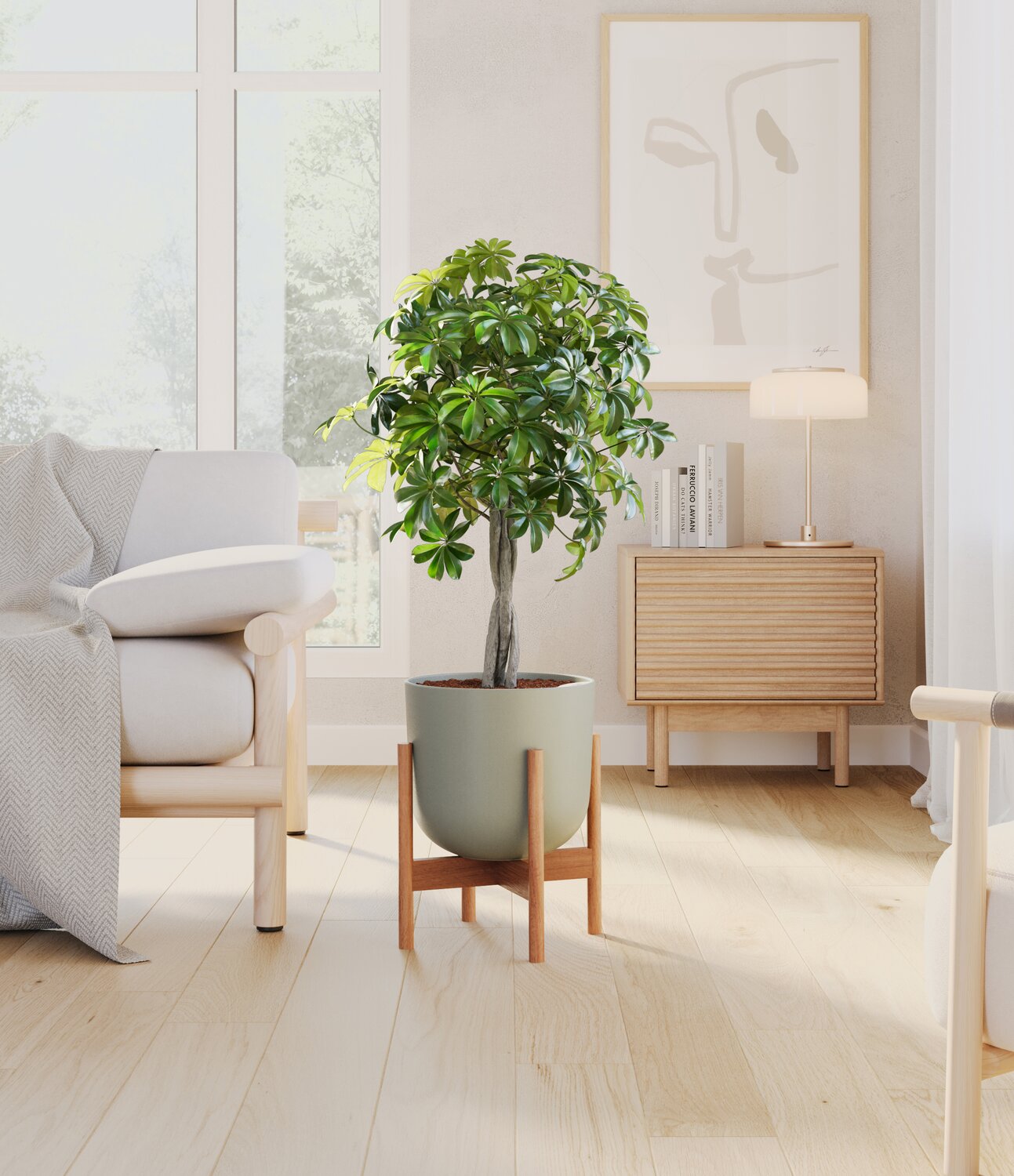
6. ZZ Plant
The ZZ plant has shiny dark green leaves that grow on slender stems into a zig-zag pattern, catching the light in interesting ways throughout the day.
Air purification is one of the ZZ plan’s best features, helping filter VOCs like benzene, toluene, ethylbenzene, and xylene from indoor air.
Plus, it’s easy to care for, thriving in direct sunlight, medium to bright light, and low light or spaces without natural light, making it one of the most versatile plants for use throughout your home, from bathrooms to bedrooms.
Your ZZ plant only needs watering every two months with the easyplant pot, and you’ll see around six inches of growth yearly.
7. Fiddle Leaf Fig Tree
If you want a huge houseplant for air purification, you can't beat the fiddle leaf fig tree. It can grow up to 10 feet indoors with a relatively narrow spread, so it'll reach your ceiling without encroaching into your usable living space.
Your fiddle leaf fig tree will thrive in bright, indirect, and medium-light rooms with some exposure to direct sunlight during the day. Too much sun can impact photosynthesis and reduce your tree’s ability to purify the air.
Pruning is fine from spring to summer from the trunk to control the height, with new leaves and shoots forming within a few days.
The water requirements are low, with the easyplant self-watering pot needing a refill every month or when the pot runs dry.
8. Areca Palm
The areca palm is a large houseplant that grows upright and then spreads outward from the base. It has arching fronds, bowing stems, and pinnate leaves that move beautifully with the slightest breeze.
Your areca palm will purify the air in your home, efficiently removing toxins and other harmful substances thanks to the leaf’s large surface area.
Avoid placing your areca palm in direct sunlight – diffused lighting is best, such as in the corner of a room or on the floor near but not exposed to a window. It’ll also do well in spaces with medium to low light but not in rooms with no natural light.
With proper care, your areca palm will grow to 6 feet tall within a few years. For three air-purifying plants, check out the Palm Paradise collection.
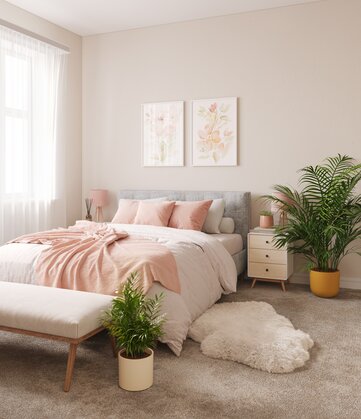
Purify Your Indoor Air with easyplant
Poor watering frequency directly affects your plant’s ability to purify the air. The easyplant self-watering pot optimizes water delivery by providing water when your plants want a drink – all you need to do is top it up every one or two months.
Check out the latest easyplant collections here.